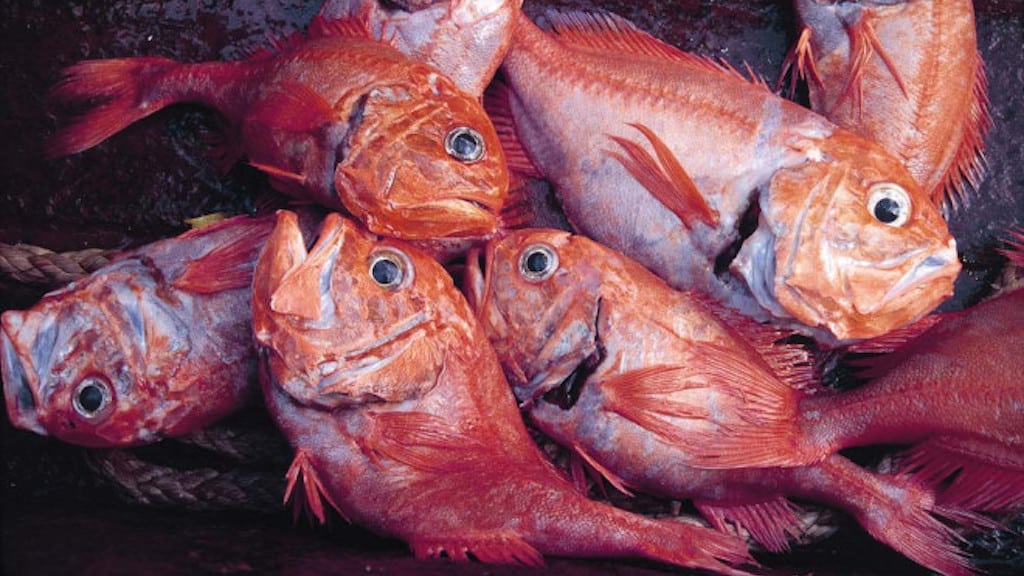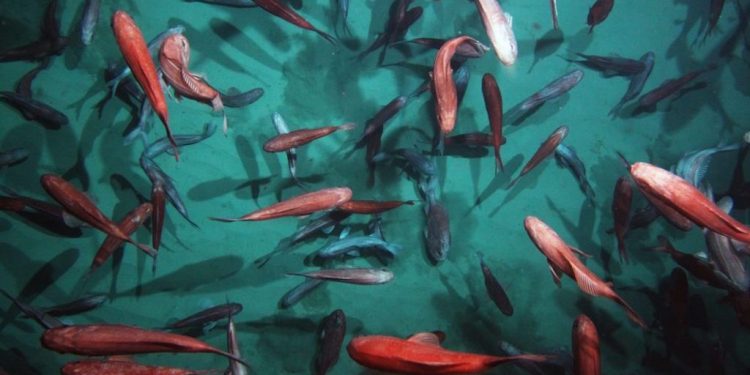Originally certified by the MSC in 2016, New Zealand’s three largest fisheries for orange roughy have again been through the recertification process.
‘Orange roughy is a popular fish that forty-odd years ago was taken to the brink. By 2016, we had completely reversed that and rebuilt these populations to very healthy levels,’ said George Clement, CEO of the Deepwater Group (DWG) which represents the owners of quota for New Zealand’s deepwater fisheries
‘We are very proud of the industry’s hard work and our place as the only orange roughy fisheries in the world to be MSC certified.’
New Zealand has the largest orange roughy fisheries in the world, representing around 80% of the global catch.

He commented that the care taken in managing these fisheries and the massive investment quota owners make into science and technology ensure commercial fishing is undertaken in a managed and conservative way.
‘We will continue to be very cautious with our management of orange roughy to ensure the long-term sustainability of this valuable New Zealand resource. Only the best available science is used to inform the precise fisheries management practices that are in place,’ he said.
Since 1998, quota holders have put $17 million into 34 directly commissioned orange roughy biomass surveys, stock assessments, and science projects costing, in addition to the government’s spend of $27 million – which has been cost recovered from quota owners. The industry has scheduled more directly purchased science over future years.
‘Those involved in the fishery back in the 1980s admit the lack of scientific knowledge at the time was a key factor in the depletion of the fish’s populations. Forty years ago there was little known about orange roughy biology and, with the benefit of hindsight, the catch limits set by the government were too high.’
New stock assessment models developed in the early 2000s enabled fisheries management decisions to be made and implemented with greater levels of confidence, reducing the catch limits to a low of 6941 tonnes, and a total catch of 5324 tonnes in 2013. Catch limits have since been progressively increased to 12,161 tonnes in 2020-21 as stocks are assessed to progressively have recovered in size.
According to the Deepwater Group, the industry invests around $2m in fisheries science for orange roughy to inform the setting of quota levels. For orange roughy, these are now set to allow less than 5% of the stocks to be caught each year.
The MSC audits are a fully independent and vey robust process that invites full engagement of all those involved.
‘Obtaining MSC certification is incredibly challenging – certification is for a five-year period with annual audits requiring detailed information on the science, catches, environmental interactions, and the management of certified fisheries. These audits are a completely independent and very robust process that invites full engagement of all those involved,’ George Clement said, commenting that the industry is continuing to invest heavily in science in the orange roughy fishery, with the current focus being on how the industry is minimising impact on corals in these fisheries.
‘Some benthic organisms, such as deepwater corals, are found in small quantities in orange roughy areas. Auditors, when assessing our performance against the MSC’s standards, sought information that demonstrates our fishing does not adversely affect the populations of coral to an unacceptable degree,’ he said.
‘We have to date satisfied these requirements, and we will continue to demonstrate the methods used to minimise fishing’s impact on corals. While the industry is actively investing in science and developing improvements in technology, we reiterate our call for the Government to undertake an inventory of the benthic biodiversity within New Zealand’s EEZ.’









